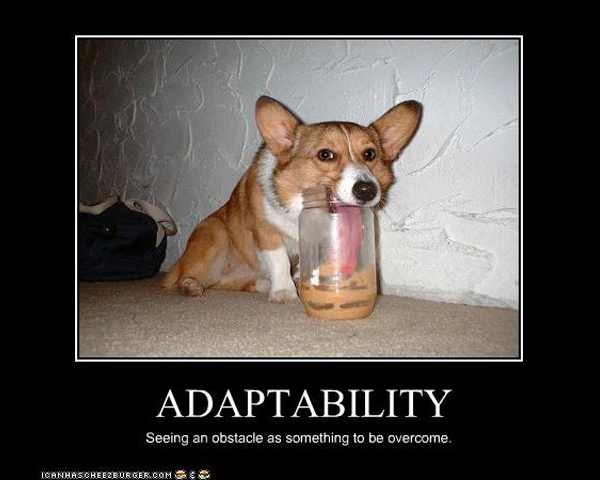This week Oscar Munoz, United Continental Holdings’ new CEO, will meet with labor leaders to reach new deals with the airlines’ flight attendants and mechanics – given they’re still under agreements set by the airlines predecessors. This summit will take place 5-years after the merger between United and Continental Airlines.
Yes…5-years after the merger of 2 of the largest airlines in the United States, United Continental Holdings is finally getting around to addressing concerns of one of their biggest assets — their people.
Sure – aircrafts aren’t cheap. Neither is the gas. But without dedicated and customer-focused people flying the planes, maintaining the planes, and servicing the customers – keeping passengers comfortable before and during the flight – you don’t have much of a successful airline.
According to a KPMG study – 83% of mergers & acquisitions did not boost shareholder returns. In short – 83% of mergers & acquisitions did not achieve some anticipated positive results.
Kudos to Munoz for starting off his tenure with an apology to its 85,000 employees. He has engaged with them one-on-one and listened to their complaints. He wasn’t the CEO when the merger took place, so he shouldn’t be blamed in full for the debacle. But he is apologizing for the mess he has to clean up. Some may say part PR, however, it takes an accountable leader to admit when they’re wrong and own trying to fix the situation.
Certain factors can help to make mergers and acquisitions much smoother for employees, customers, and shareholders alike. If these 7 key-factors were addressed from day-1, Munoz may not have had a need to apologize.
7 factors to increase smooth mergers and acquisitions:
Prepare for change.
Change is hard. Everyone deals with it differently. Some people avoid it. Some take baby steps. Some confront it. Some dive in head first and change everything. A merger or acquisition requires new behaviors and ways of doing things. As the Borg say, “Resistance is Futile.” Perhaps, but resistance can be minimized and the speed of commitment increased – increasing your ability to achieve success through people. Organizational change is inevitable, but that doesn’t mean it has to be painful or costly. Have a detailed change management plan in place. Execute. Don’t forget about the people. People adapt to change at different a pace. People internalize change in different ways. Change is emotional. Getting your people to commitment to change is not a one size fits all off the shelf solution.
Communication is king.
Most, if not all, of organizational issues start with a lack of communication or miscommunication. This increases even more when it comes to mergers & acquisitions – as now you have 2 organizations trying to (or perhaps not trying to) communicate as one. Timely communication explaining the process and impacts, how it affects the teams of people and customers, and communicating and then providing what everyone needs to do to succeed — all while keeping open dialogues in all directions — is imperative to a successful transition. If you fail to do this – people talk, make assumptions, engagement declines, productivity declines, and service suffers greatly. You end up with confused and unhappy employees and confused and unhappy customers.
The merging of 2 cultures.
Culture is the way work gets done around here. For long term success you want a high performing culture. Although some cultures are similar, organizational cultures are like snowflakes, no two are the same. So when 2 ways of doing things are merged, you’re going to bump into roadblocks. It’s not about right and wrong or what is and what was. It’s about merging the 2 and finding what works best moving forward. You can’t have a successful merger or acquisition with an attitude of “well we bought you so to bad adapt and do it our way!” Organizational culture isn’t just the result of one swift decision, but an ongoing process and way of being. Ask for feedback and act on feedback. Bringing 2 cultures together is a journey. A journey your people, and even customers, need to be involved in from day one. Mourn the past and begin to build a new future together.
Processes, processes, processes.
Processes – without them not much could get done. So where do you start when you have two conflicting ways of doing things? You need to conduct a detailed process inventory and impact analysis. Identify which processes you need in place, when, and where. Look at which may overlap and may be redundant. Look at which work well, which need improvement, and which can be integrated. Of course, taking a look at the technology in this way plays a huge part as well. Perhaps one entity has a better process than the other? Perhaps both need to be streamlined and refined? Maybe one current technology system will meet your needs, or, perhaps you may need to build or buy a new solution. Either way – assess all processes and impacts that can hinder performance and strategic execution – making your organization more flexible and agile while merging resources.
Train your people on the new processes.
During a merger and acquisition people often have fear of incompetence. They assume their world is being turned upside down. They are afraid their job may become obsolete or they may not have the skills to perform successfully in the new environment. Your people need training on the new processes and technology. In fact – members of the team should be a part of developing these processes and helping you continue to refine and streamline them as they begin to use them. Your people need to be told what the new process is, why it needs to change, and how it will help make their job easier – and how it will help to better service the customer.
Leaders should lead, not manage.
Like Munoz – take responsibility. Be accountable. There are going to be issues and problems. And that’s OK. Leaders generate enthusiasm, demonstrate how things should be done in the new world, and fix breakdowns. They develop the path for everyone to follow to ensure the organization moves forward – together. For more on this, see our checklist: How to be a Great Leader!
Evaluate and course correct.
High-performing organizations remain successful by measuring results, evaluating activities or projects, and creating clear expectations with regard to the desired performance. This is especially important during a merger or acquisition. You can’t forget about ways to best manage individual performance and help others reach their potential. Additionally, effectively measure, analyze, and review performance data to drive improvement and organizational competitiveness. Continuous improvement and innovation is imperative to success, and can only occur through evaluation and a culture of continuous learning. Have a distinctive strategy and processes that are continuously measured and evaluated. You may not get it right the first time. Learn and adapt.
United Continental Holdings is lucky that they haven’t experienced more adverse effects from their lack of focusing on the key factors for a successful merger or acquisition. But there is hope. Munoz is off to a good start. We’ll see if United Continental ultimately keeps happy employees and happy customers and boosts shareholder’s returns.
About: Scott Span, MSOD, CSM: is CEO & People Strategist, Communications and Change, at Tolero Solutions. He supports clients to engage and retain talent and wow customers, achieving success through people, creating organizations where people enjoy working and customers enjoy doing business.
Email | Website | LinkedIn | Twitter | Blog | Facebook
*All Rights Reserved. Reproduction, publication, and all other use of any and all of this content is prohibited without authorized consent of Tolero Solutions and the author.





